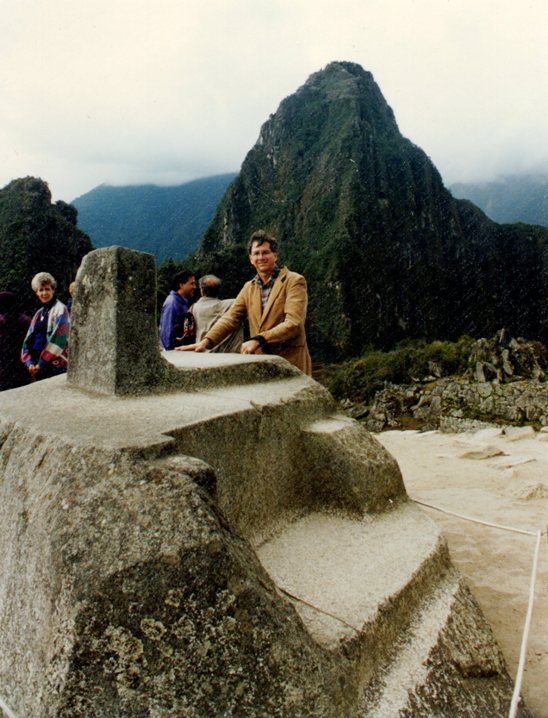Trips & Vacations - Peru, October 1995
Bruce did four projects for the Government of Peru during the 1990s. On the fourth trip to Peru, Betsy came along and they took some time off to tour Lima, Cusco, the Sacred Valley of the Incas and Machu Picchu. The photos and descriptions below are from their trip in September and October of 1995.
Bruce's work was done at an office building in San Isidro, an affluent suburb of Lima. While Bruce worked, Betsy spent a lot of time window shopping. Precious metals are still mined in this part of the world, and the shops were filled with fine silver tableware, jewelry and other nice things. They stayed at the Garden Hotel which was in the area of town where the business owners, politicians and diplomats lived. The hotel was only 6 blocks from the Japanese ambassador's residence the Sendero Luminoso (Shining Path) seized 6 weeks after they left. The Sendero Luminoso was the Communist Party of Peru.
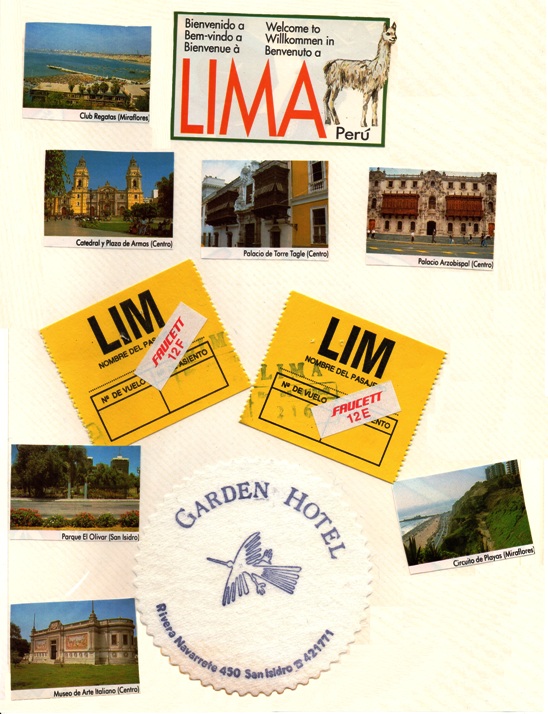
They did not tour Lima, but did shop and eat out most nights after work. During the project in Lima, Bruce took 4 days off, and he and Betsy took a trip to Cusco, the Sacred Valley of the Incas, and Machu Picchu.
The photo below was taken out the aircraft window high above the Andes on the flight from Lima to Cusco. The Andes are very high, averaging some 6,000 feet higher than the Rocky Mountains in the United States.
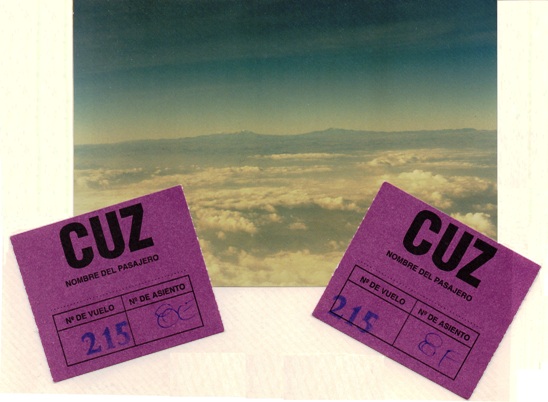
Since Cusco is approximately 11,000 feet above sea level, Bruce and Betsy spent the first day at their hotel acclimating to the altitude. Below is a photo of Betsy in the dining room at the Hoteles Royal Inca.
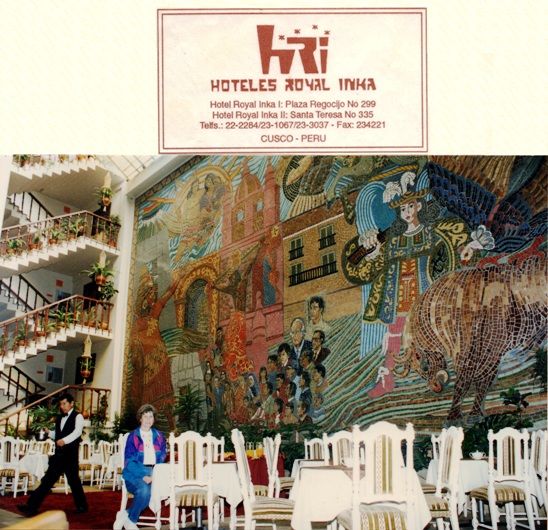
Cusco is one of the most famous cities in the world and a popular tourist destination. Their four day trip was arranged through Southern Cross Adventures and included all the attractions in Cusco, the Sacred Valley of the Incas, and Machu Picchu. Below is their All Attractions passes for Cusco and the surrounding areas.
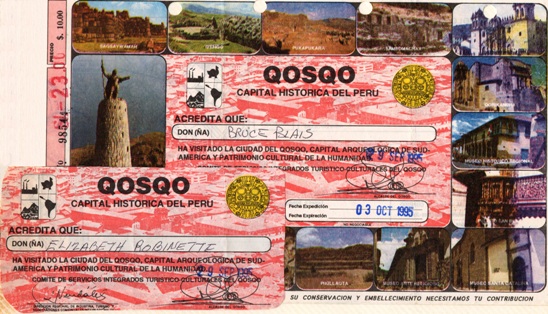
Below is one of the tour buses the tour company used.
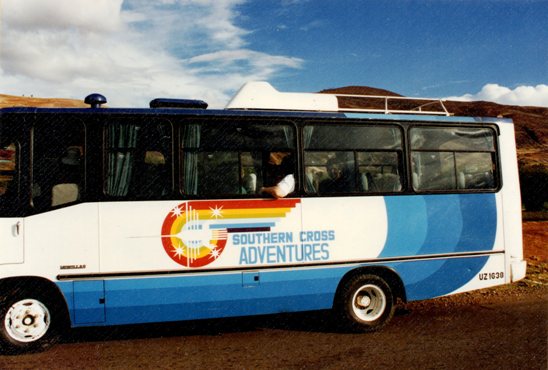
Below is a statue of El Gran Pachacuteq, the greatest of the of the Inca Kings. He turned a small kingdom of approximately 25 square miles into an empire that spanned about half of the western side of South America. It was similar to what the Romans did in Europe.
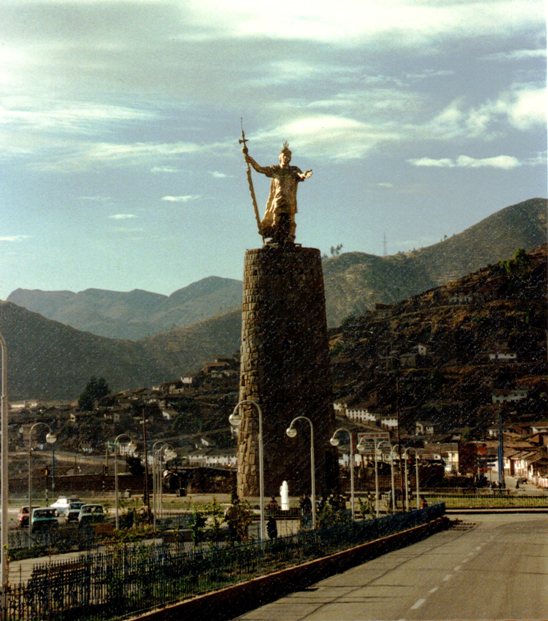
Below is a view of part of the city of Cusco. The city is in the Andes Mountains nearly 11,000 feet above sea level.
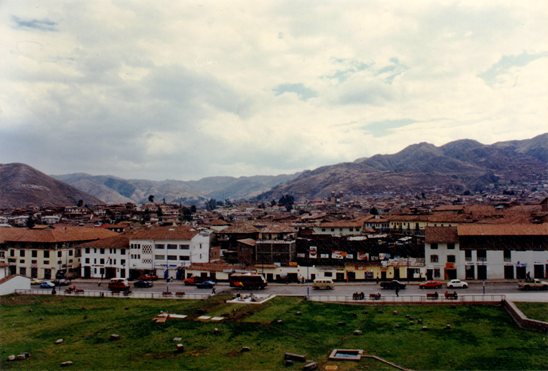
The Basilica of Our Lady of the Assumption in Cusco is shown below. It was built on the site of the Inca temple known as Kiswarkancha using stones pilfered from Saqsaywaman, another Inca holy site outside Cusco. It was built on the Kiswarkancha site to replace the Inca religion with Christianity.
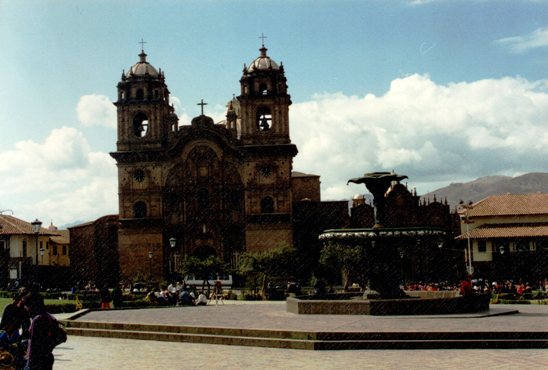
The photo below is what remains of part of a temple looted by the Spanish. The guide indicated this used to be a solid gold shrine. The gold was taken and this is all that remains. Notice the condition of the precision masonry work after 600 years. The Incas and Mayans were great stone masons.
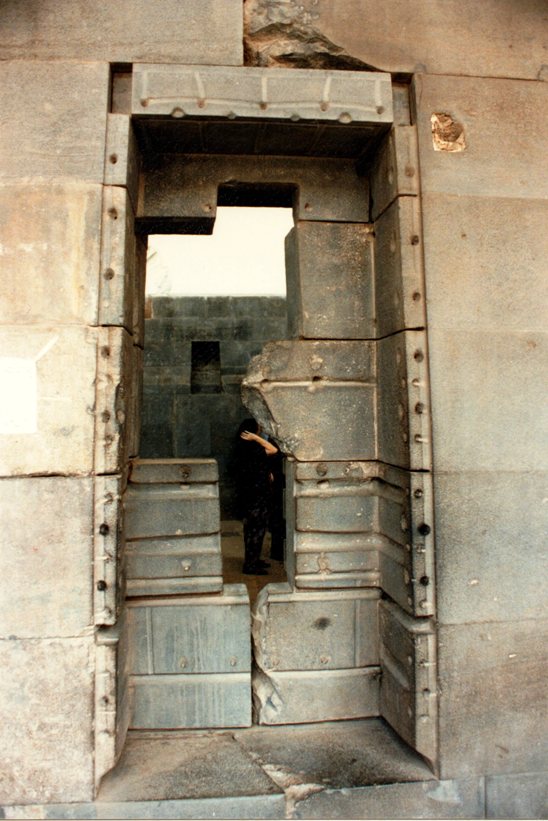
There were plenty of photo opps around town. Below is a photo of Betsy with a local woman and llama. The locals dress up and pose for photos and tips.
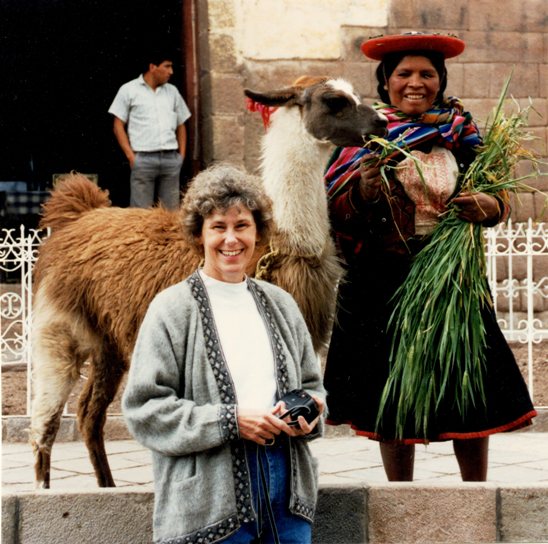
Betsy and Bruce in a village and terraced hillside outside Cusco. The multicolor flag is from the Inca Empire predating modern day Peru.
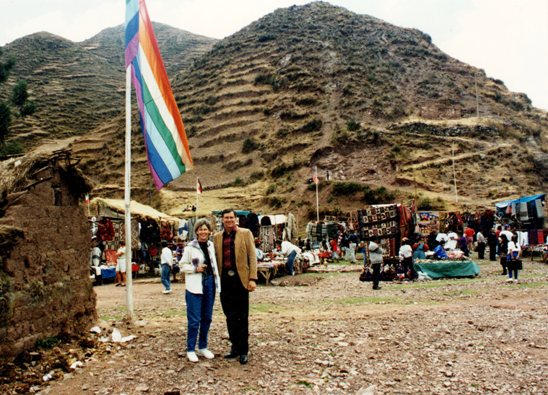
Just outside Cusco ia the Sacsayhuaman complex. The design and
construction are almost other-worldly. To appreciate Sacsayhuman
(pronounced sac-say-ow-man),
watch this
YouTube video. It rivals anything done by the Egyptians or
Romans. Below is a photo of one end of the complex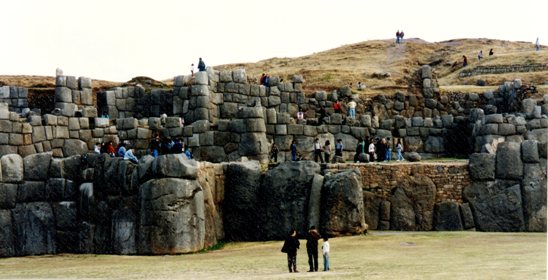
The stones in the photo above are deceptive from a distance. Below is Betsy in front on one stone.
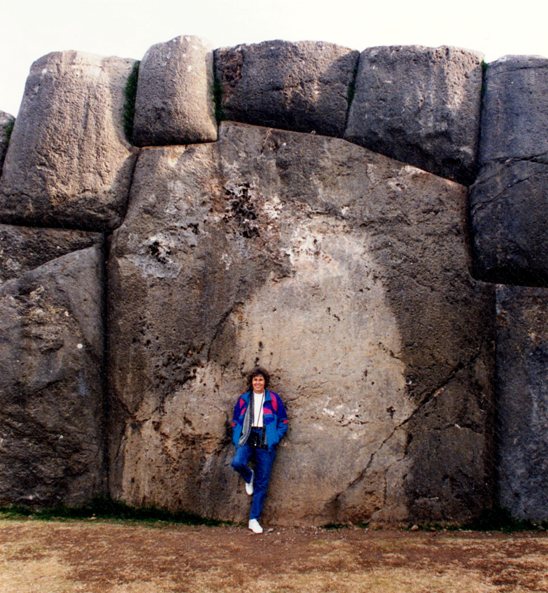
The natural slides at Sacsayhuaman outside Cusco are shown below. These are called volcanic lava extrusions and the kids love them.
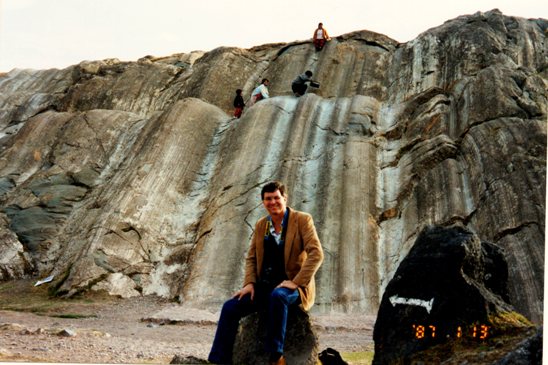
The Sacred Valley of the Incas
The Sacred Valley of the Incas runs about 60 miles from near Cusco to Machu Picchu and follows the Urubamba River. It was the heart of the Inca civilization. The valley starts at an elevation of 9,800 feet at its western end and drops to 6,700 feet at Machu Picchu. It averages about a half-mile in width. Mountains on either side of the valley are at or near 19,000 feet above sea level.
The photo below shows barren landscape at 15,000 feet above sea level as you cross over a mountain pass between Cusco and the Sacred Valley.
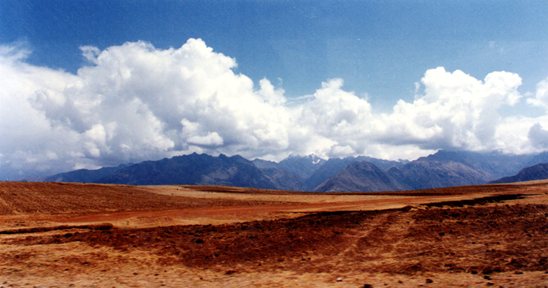
The western end of the Sacred Valley of the Incas is shown in the photo below.
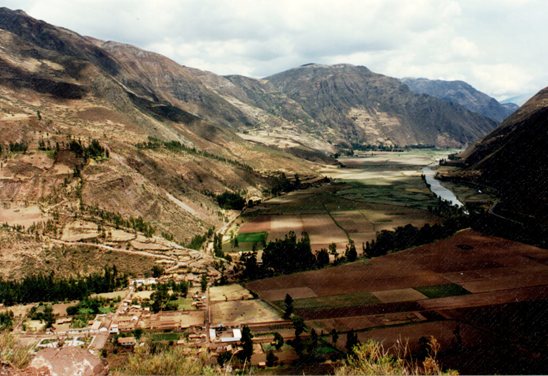
The photo below shows the ancient ruins at Ollantaytambo (pronounced O-yan-tay-tambo).
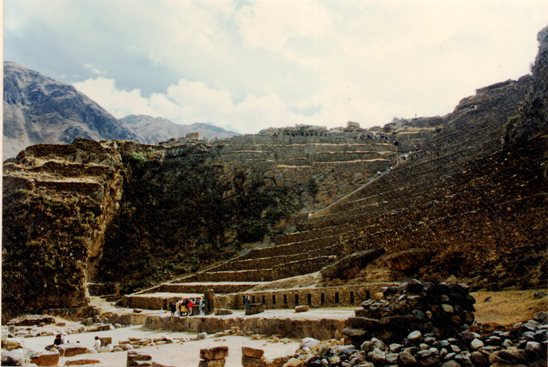
Below is a photo of Bruce and Betsy up on the ruins at Ollantaytambo.
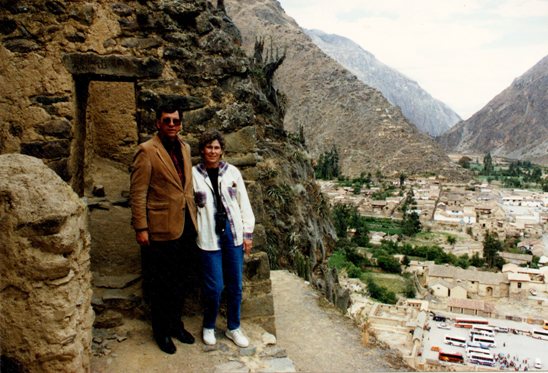
Some of the friends Bruce and Betsy made on the tour are shown below. The tour groups are assembled by language, so all the folks on their tour were English-speaking, many of which were from the UK.
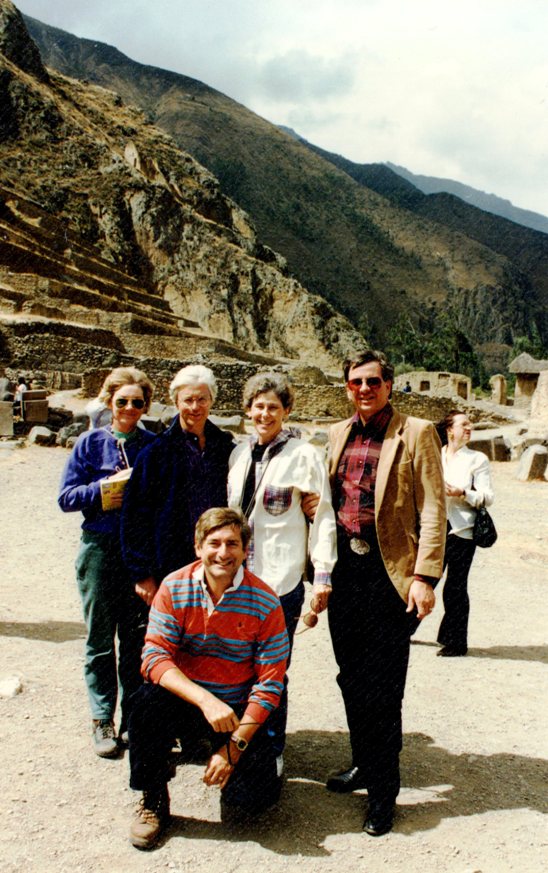
The photo below shows the carved watchtowers, Viracocha head and the housing. Ollantaytambo was an outpost intended to detect invaders coming up the valley from the lower elevations and Amazon Basin. The carved head in the center of the photo below is of Viracocha, an Inca god, and was meant to place fear in the hearts of any invaders. The eyes and mouth are actually carved out guard positions. The very top of the mountain resembles a Condor, with its head to the left, back as the large second hump, and the wing angled down from the head.
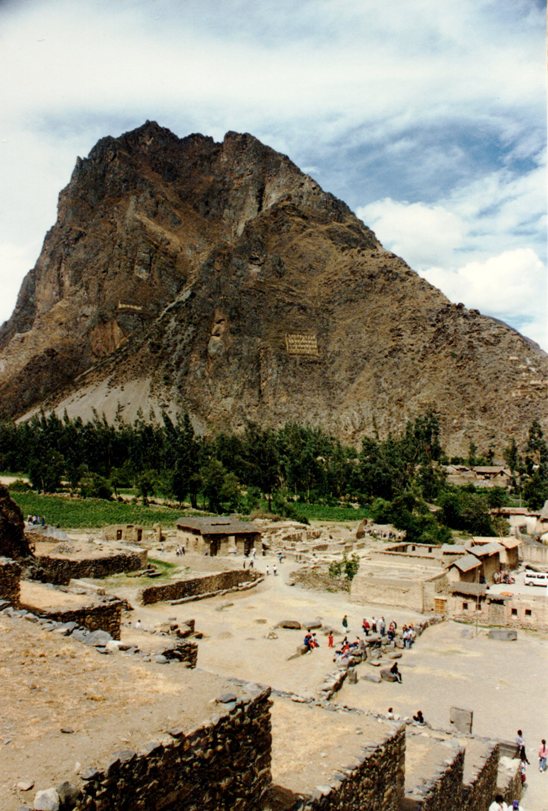
One of many big blocks at Ollantaytambo is shown below. The fit is amazing. How they got these into position is also amazing in that the Incas had neither discovered the wheel nor draft animals.
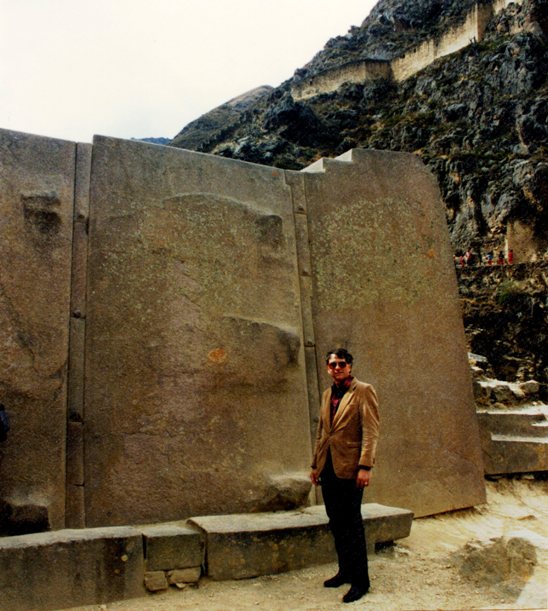
The photo below shows Betsy with some of their international friends at lunch on tour. The tour was all inclusive and included lunch stops at local restaurants. The couple on the left is a British orthopedic surgeon and his wife.
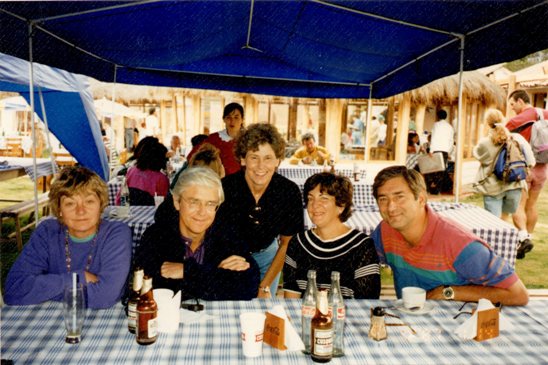
More on Ollantaytambo can be seen in this YouTube video.
At the end of the Sacred Valley lies Machu Picchu, the highlight of the trip. They took the train from Cusco, and a tour bus took them up to the archeological site. The train and bus can be seen on the ticket below. A map of the site was also included in the ticket booklet.
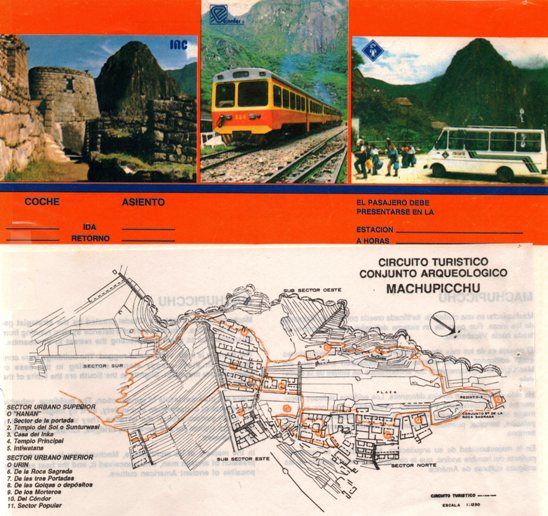
The tour bus took you up from the train station to the entrance to the site. The photo below shows the train station below. The mountains in this area are on the order of 19,000 feet above sea level. The rail line follows the Urubamba River down the Sacred Valley and the scenery is fantastic.
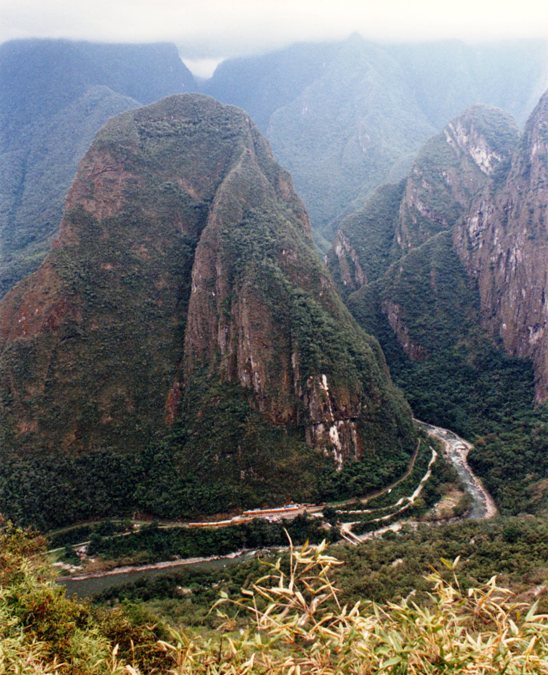
The photo below is of Bruce and Betsy at the entrance to the Machu Picchu site. The building in the background is a restaurant and gift shop where they had lunch before going back down the hill to the train station.
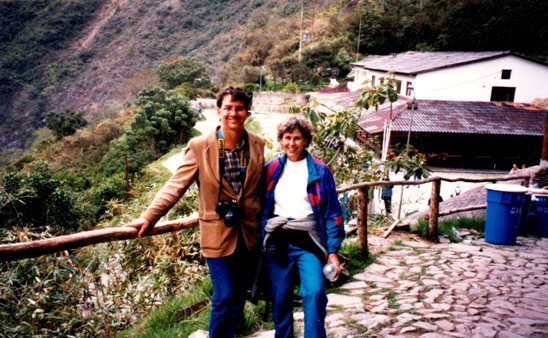
A short distance further up the hill, you experienced the view below on entering the archeological site. Having seen and heard so much about Machu Picchu, seeing it in person the first time was an emotional experience.
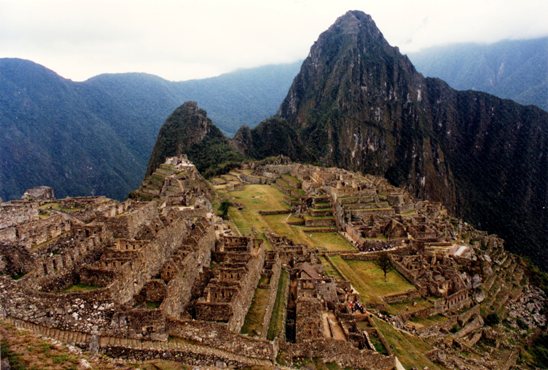
One feature of ancient architecture in the western hemisphere is the trapezoidal shape of buildings and windows. Betsy is shown in one below. The reason for this was that it was a form of earthquake resistant construction. Since the structures were leaning in on themselves from all four sides, they were in compression and this helped them withstand earthquakes better.
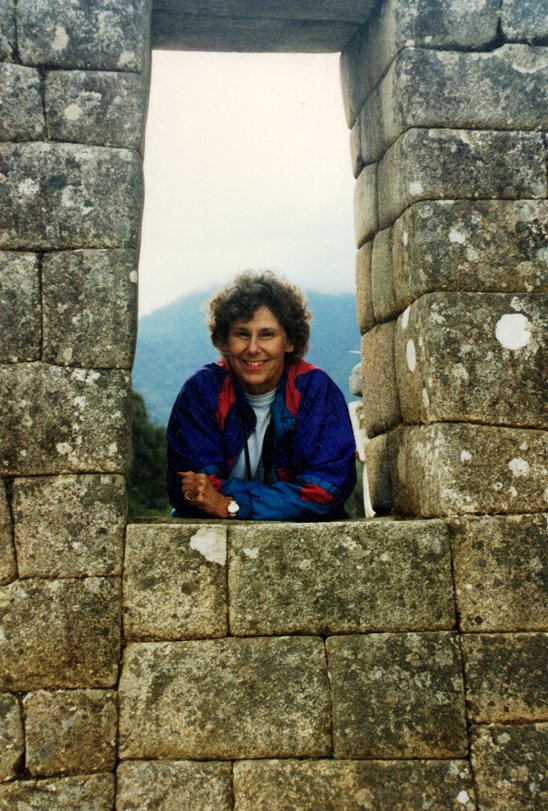
Below is a photo of Bruce at the altar at Machu Picchu. According to some new age religions, this is one of the four corners of the universe. Two dimensional thinking for sure unless the universe is a tetrahedron. Shirley McLane claims to have had a vision of her past lives there. Others have said they felt the rocks vibrate and the sun charge them with celestial energy there. When he placed his hands on the altar, all Bruce felt was a rock.
